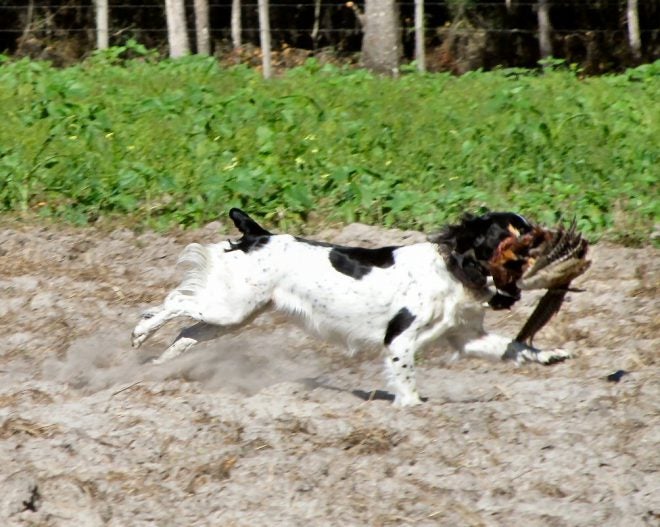Time to Get Gun Dogs in Shape for Hunting
Bob McNally 08.29.16

It was a big dove shoot, maybe 100 gunners, a typical Middle Georgia affair with a mid-day barbecue, then shooters heading afield in early afternoon. There was an early flurry of opening-day birds, and though the temperature was well in the 90s, a huge black Labrador retriever trotted around in the field confusion fetching birds, hunting lost doves, and doing, basically, what gun dogs are suppose to do on the first hunt of the year.
The Lab was unruly, but only acting, well, like a hunting Lab. The dog’s problem rested more with its owner than with the canine because the pooch wasn’t restrained. At any shot that was fired, the dog ran over to investigate, frequently finding and retrieving the bird for the shooter.
No one minded the dog’s efforts, but after an hour or so it was clear the animal was completely exhausted. He was big and overweight, and the owner was no where near to provide the dog shade, water, and required rest.
Hunters in the field helped by giving the dog water and trying to restrain it in the shadow of trees. But every time there was a shot, the dog leaped to its feet and raced far off toward the action.
Late that afternoon the owner finally went looking for his dog, which he found laying under a field-side hedgerow. The dog was panting badly and couldn’t walk, worn out completely from exhaustion and dehydration.
After several hunters suggested he take the dog to a veterinarian, the owner did. The lab was kept overnight by a vet, but never recovered. It died the next morning.
Thoughtless care by its owner felled a good, though out-of-shape, Labrador because the dog tried to do what it was bred to do: hunt and retrieve game birds.
With bird hunting seasons already underway and more to open soon (ducks, quail, etc.), gun dog owners should take extra special care of their four-leg hunting pals with proper food, water, and shelter.
But an often overlooked part of the deal for owners of gun dogs is to get the pooch in proper hunting shape well before season. This is only reasonable, since no long-distance runner would consider entering a marathon without jogging regularly and staying in shape. A human swimming champion wouldn’t think of racing in competition without long months of practice and preparation.
Why, then, should a quail hunter expect peak performance from his pointers if he hasn’t worked his dogs many weeks prior to hunting season? And no matter how big and strong a Chesapeake or golden retriever, such dogs can’t perform to their capabilities unless owners have had long practice sessions with them well before opening day on a duck marsh, pond, lake, or field.